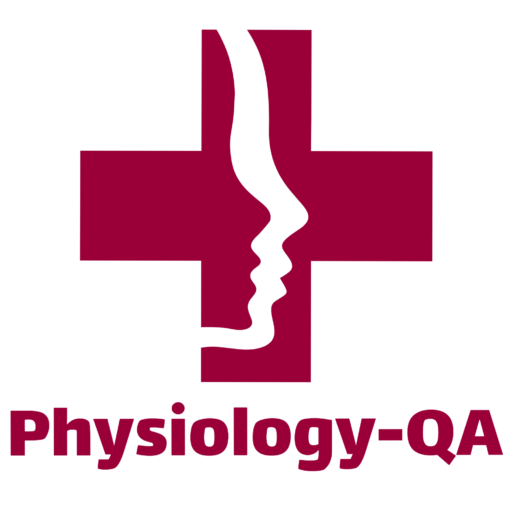Functions of Sertoli cells
Nourishment and support: Sertoli cells provide physical and nutritional support to developing sperm cells. They create a suitable microenvironment within the seminiferous tubules for spermatogenesis to occur.
Sperm development: Sertoli cells play a crucial role in the maturation and differentiation of germ cells into spermatozoa. They provide the necessary nutrients and growth factors required for sperm development.
Blood-testis barrier: Sertoli cells form a protective barrier between the developing sperm cells and the bloodstream. This barrier prevents harmful substances from reaching the sperm cells and helps maintain an immune-privileged environment.
Hormone regulation: Sertoli cells regulate the local hormonal environment within the seminiferous tubules. They secrete various hormones and growth factors that influence spermatogenesis, including inhibin, activin, and androgen-binding protein.
Sperm release and transport: Sertoli cells are involved in the release and transport of mature spermatozoa. They assist in the movement of sperm from the seminiferous tubules to the epididymis, where sperm are stored and undergo further maturation.
Phagocytosis: Sertoli cells remove damaged or defective sperm cells through phagocytosis, ensuring the quality of sperm that is released into the reproductive tract.
Regulation of spermatogenesis: Sertoli cells control the timing and progression of spermatogenesis. They respond to hormonal signals, such as follicle-stimulating hormone (FSH), to initiate and regulate the different stages of sperm production.
write short note on Spermatogenesis
Spermatogenesis is the complex process of sperm cell development that occurs in the testes of male organisms. It involves multiple stages of cell division and differentiation, ultimately leading to the production of mature sperm cells capable of fertilization
Primordial Germ Cells (PGCs)
|
|
Spermatogonia
/ \
/ \
Type A Spermatogonia Type B Spermatogonia
|
|
Primary Spermatocytes
|
|
Meiosis I (DNA replication)
|
|
Secondary Spermatocytes
|
|
Meiosis II (no DNA replication)
|
|
Spermatids
|
|
Spermiogenesis
|
|
Spermatozoa
Primordial Germ Cells (PGCs): During embryonic development, PGCs migrate to the genital ridge and differentiate into spermatogonia.
Spermatogonia: These are the stem cells located in the seminiferous tubules of the testes. They undergo mitotic division to produce two types of cells: Type A and Type B spermatogonia.
Type A Spermatogonia: These cells replenish the pool of spermatogonia through self-renewal, ensuring a continuous supply of cells for spermatogenesis.
Type B Spermatogonia: They differentiate into primary spermatocytes through a process called spermatocytogenesis.
Primary Spermatocytes: These are diploid cells that undergo meiosis I to produce secondary spermatocytes.
Meiosis I: Primary spermatocytes replicate their DNA and divide, resulting in two haploid secondary spermatocytes.
Secondary Spermatocytes: These cells enter meiosis II without replicating their DNA and further divide.
Meiosis II: Each secondary spermatocyte divides, yielding four haploid spermatids.
Spermatids: These are round cells that undergo extensive morphological changes during spermiogenesis.
Spermiogenesis: Spermatids undergo cytoplasmic and nuclear modifications, transforming into elongated sperm cells with a head, midpiece, and tail.
Spermatozoa: The mature sperm cells are released into the lumen of the seminiferous tubules and pass through the epididymis for further maturation and storage.
write short note Functions of testosterone
-
Development of Male Reproductive Organs: Testosterone is responsible for the development of male reproductive organs during fetal development. It promotes the differentiation and growth of the penis, scrotum, and prostate gland.
-
Spermatogenesis: Testosterone is necessary for the production of sperm cells in the testes. It stimulates the division and maturation of spermatogonia, the precursor cells for spermatozoa.
-
Sexual Development and Libido: Testosterone contributes to the development of secondary sexual characteristics during puberty. It promotes the growth of facial and body hair, deepens the voice, and enhances muscle mass and strength. Testosterone also plays a role in the development of sexual desire or libido.
-
Bone Density and Muscle Mass: Testosterone has anabolic effects on bone and muscle tissues. It helps maintain bone density, promotes bone growth, and stimulates muscle protein synthesis. Low levels of testosterone can lead to decreased muscle mass and bone density, increasing the risk of osteoporosis and fractures.
-
Regulation of Fat Distribution: Testosterone influences fat metabolism and distribution in the body. It helps prevent the accumulation of fat in certain areas, such as the abdomen, and promotes the distribution of fat in a more masculine pattern.
-
Red Blood Cell Production: Testosterone stimulates the production of red blood cells in the bone marrow. Increased red blood cell count enhances oxygen-carrying capacity, improving endurance and overall physical performance.
-
Mood and Cognitive Function: Testosterone is involved in mood regulation and cognitive function. Optimal testosterone levels are associated with improved mood, energy levels, and cognitive abilities, including memory and concentration
-
It causes retention of calcium sulphate, phosphorus, sodium, potassium chloride and water.
How does temperature influence in spermatogenesis
Temperature plays a crucial role in spermatogenesis, the process of sperm cell development in the testes. Spermatogenesis is highly sensitive to temperature, and even small changes can have significant impacts on sperm production and quality.
1. Optimal Temperature: Spermatogenesis requires a specific temperature range for optimal functioning. In most mammals, including humans, this temperature is slightly lower than the body’s core temperature. The testes are located outside the body in the scrotum, which helps maintain a lower temperature necessary for spermatogenesis.
2. Cooling Effect: The scrotum’s position outside the body allows it to stay slightly cooler than the rest of the body. This cooling effect is crucial because high temperatures can impair sperm production and quality. The optimal temperature for spermatogenesis is around 2-4 degrees Celsius lower than the core body temperature.
3. Heat and Sperm Production: Exposure of the testes to elevated temperatures can negatively impact spermatogenesis. Prolonged exposure to high temperatures, such as in hot environments or frequent use of saunas and hot baths, can temporarily disrupt sperm production. This is why the testes are located outside the body to keep them cooler.
4. Impaired Sperm Quality: High temperatures can not only reduce sperm production but also affect sperm quality. Elevated temperatures can lead to DNA damage in developing sperm cells, resulting in abnormal sperm morphology and decreased sperm motility. These factors can affect the sperm’s ability to fertilize an egg and increase the risk of infertility.
5. Fertility and Temperature: Sustained exposure to high temperatures can have a significant impact on male fertility. It can lead to a temporary decrease in sperm production and quality. However, once the temperature returns to the optimal range, spermatogenesis can recover, and sperm production can resume. It’s worth noting that significant or prolonged exposure to high temperatures can have a more long-lasting effect on fertility.
6. Varicocele: Varicocele is a condition characterized by the enlargement of veins within the scrotum, which can lead to increased testicular temperature. This condition is associated with impaired sperm production and reduced fertility. Treating varicocele, such as through surgical intervention, can help restore normal testicular temperature and improve spermatogenesis.
In summary, temperature plays a critical role in spermatogenesis. The optimal lower temperature in the scrotum allows for normal sperm production and quality. Exposure to high temperatures can disrupt spermatogenesis, leading to decreased sperm production and impaired sperm quality. Maintaining a suitable testicular temperature is essential for male fertility and reproductive health.

